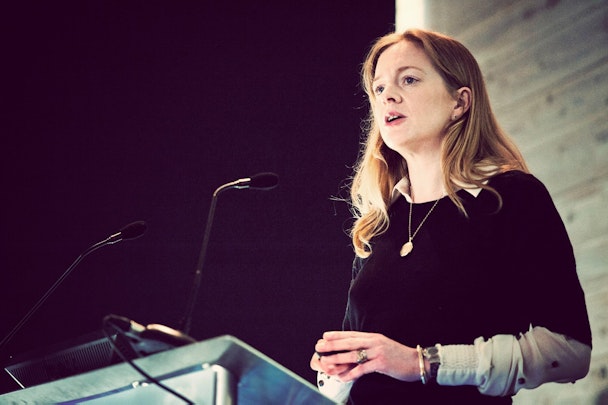Q&A: can a creative agency work without a traditional hierarchy?
Is the traditional hierarchical organisational structure appropriate for creative agencies anymore? The Drum Network spoke with Erika Clegg, co-founder and creative strategist at communications design agency Spring, to find out more about the agency’s recent structural shake-up.

Erika Clegg, co-founder and creative strategist, Spring.
You recently decided to ‘reshape’ your agency Spring. What factors prompted the change?
The agency structure had become bloated, with too many people and not enough sense of shared direction. I wanted a greater sense of individual responsibility married with a stronger sense of team. We wanted to reshape Spring to field ‘small groups of smart people’.
Three years ago, I started individually mentoring everyone in the agency, with people’s own vision and action plans designed to tie in with the business’s. As part of this ongoing mentoring, we developed a Spring Ethos, which has transformed the business.
The Ethos is: bring positive energy; know what matters; make excellent work; improve people’s lives; and live our vision. The vision we share is that, as the agency for change, we take on projects that require us to be bold, disciplined and empathetic. What the Ethos has done is made it much easier to set a corporate way of being and hold each other to account. It also created a clear point of change, and since we introduced it the team has become smaller and smarter.
What research did you do into organisational structures before considering your own?
We wanted to demonstrate that Spring has an ecosystem of skills and shared goals, rather than a traditional top down hierarchical structure. I belong to a chief executive officer (CEO) peer-to-peer mentoring group and we have consistently challenged each other’s structures - from legal firms to civil engineering businesses to FMCG brands, the new way of working is going to need every kind of business to review how it demonstrates corporate hierarchies.
I’ve researched structures of real businesses and recommendations from business theorists and the traditional family tree structure still prevails. Google ‘organisational charts’ and you’ll find even progressive brands still wielding the top down structure. Those brave businesses that have broken the mold and ventured into overlapping circles and jellybeans usually end up putting their CEO and chair in the middle. It might feel egalitarian, but it isn’t – put them at the top or in the hub and you’re demonstrating their superiority.
However, that sort of structure has never really worked for us. As with many people in our industry, everyone here is a Swiss army knife of skills and dependent upon the project, they’ll bring a different set of talents to the table. The talents needed to deliver concepts are about skills, not longevity of service, and are all of critical value. So we needed more fluidity in our structure to reflect that.
What have been the key challenges in reshaping the agency?
The challenges are not so much operational. Spring’s team works in a meritocratic way, with people rewarded for knowledge, skills and behaviour rather than simply seniority. On a project by project basis, we adapt our structure to be fit for purpose. The challenge is more around mapping this sort of structure formally to explain it to clients and others.
One important step has been that we have changed job descriptions to be individualised, bringing together each person’s unique range of skills, rather than simply giving out job title descriptions. This means that in mentoring we can develop everyone in their own strengths, and that we have a full view of Spring’s capabilities throughout its team.
What is the ultimate goal of the restructuring process?
My vision for the final piece is that it will demonstrate an ecosystem or network, probably in three-dimensions rather than two, and will be at its most comprehensive online where it can be explored in more detail, with a click on any team member’s name allowing people to view their full range of skills.
I’m keen to ensure that Simon and I, the agency’s owners, are neither at the middle nor the top, that people are positioning according to their place in the client experience rather than by traditional views of hierarchy. It’s a challenge to think three dimensionally for something which is traditionally a simple grid, and in that thinking comes a new way of seeing the real-world team too.
Erika Clegg is co-founder and creative strategist at Spring
Content by The Drum Network member:

Spring
An award-winning team of designers, strategists, marketers and content creators, working a stone's throw from the beach.
Southwold may not be the first place...

